If you’re the proud owner of a maple tree, congrats on having such an amazing plant in your landscape! The brilliant foliage and fall color of various Acer species makes them true works of art!
However, what sets a maple tree apart from, say, a statue or painting, is that a growing maple is never quite finished.
Once you put down the chisel or paintbrush, the art you’ve created is generally complete and ready for display. But when an Acer goes into the ground, a gardener’s work is just beginning.
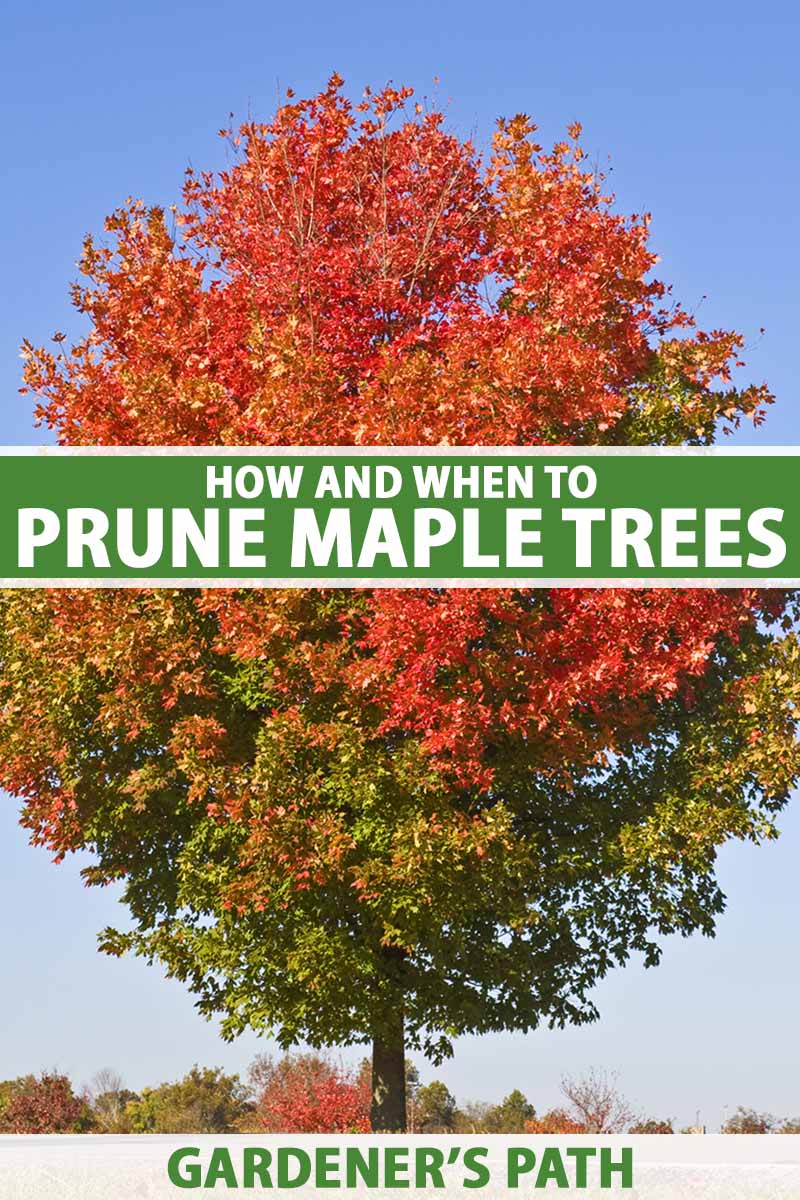
We link to vendors to help you find relevant products. If you buy from one of our links, we may earn a commission.
Besides properly cultivating the maple tree and providing preventive care to keep it free of pests and disease, a gardener will need to prune an Acer as it grows and develops.
This promotes health and vigor, along with improved aesthetics – all of which keeps the plant looking and feeling majestic and vibrant!
Even though trimming is a pretty simple process, it may prove to be a bit more complex than it looks to beginners.
Anyone who just starts cutting away without the proper know-how could impair the health of their beloved tree. Luckily, learning the proper technique is easy, and we’re here to help.
In this guide we’ll provide a simple breakdown of maple pruning practices, without putting you to sleep along the way.
Not that what we’re covering here isn’t a captivating topic – when learning about a subject like Acer trimming, I’m left scratching my head, wondering how anyone could nod off. It’s practically the Adderall of horticulture topics!
Here’s everything we’ll cover up ahead:
What You’ll Learn
Why Prune a Maple Tree?
The prospect of intentionally causing injury to a plant can make any green thumb wince, especially when the plant in question is a gorgeous maple tree.
And since Acer species ooze sap from wounds more profusely than most other plants, pruning one really does feel like you’re making a living, breathing thing bleed.
So why would we ever do this on purpose? For a few reasons:
Aesthetics
A tree must be free of broken, drooping, and otherwise damaged or weird-looking branches to look its best.
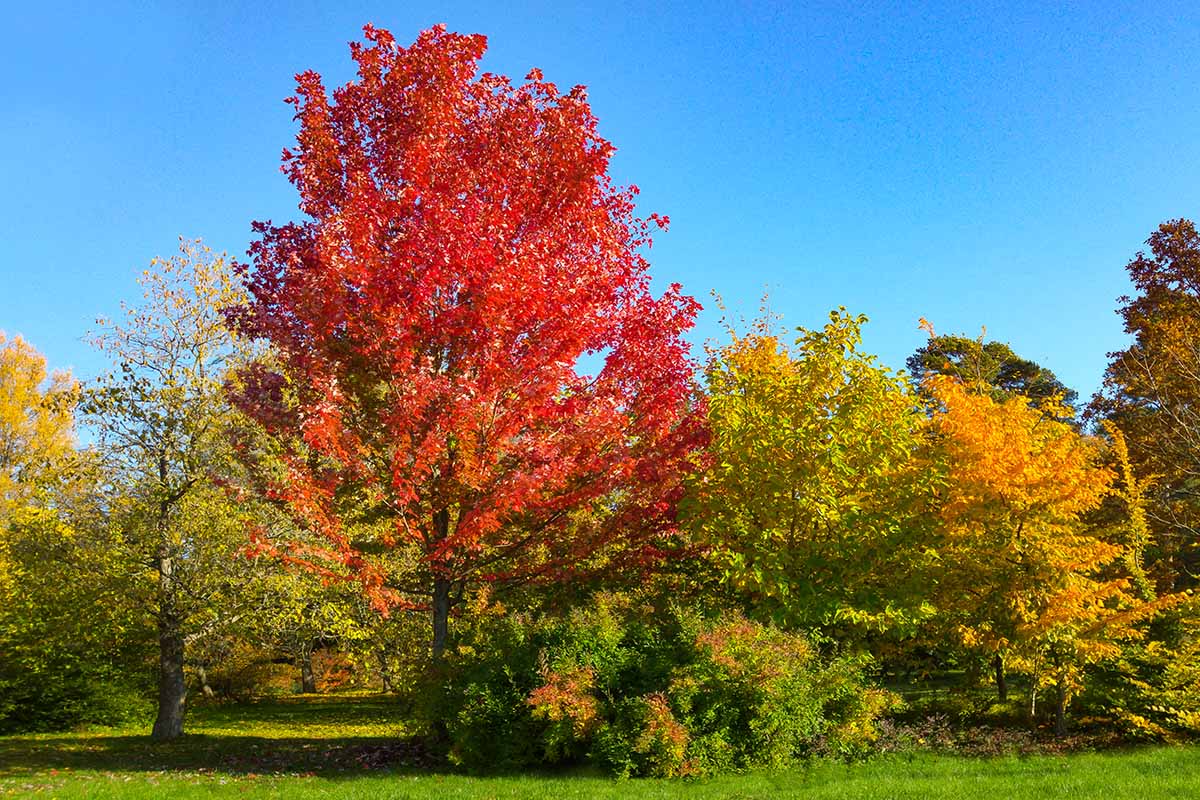
Beyond that, the growth habit of whatever species you’re cultivating may dictate when and how you opt to make your cuts.
For maples like A. rubrum that benefit from a bit of shaping to keep a tidy and manicured appearance, maintaining a strong central leader with branches at around 90-degree angles to the trunk is ornamentally essential.

Other species such as A. palmatum look better with a more natural trunk and branch structure.
Health
Wounded branches and twigs are prime entry spots for pathogens and pests to enter plants. By addressing these vulnerable spots, infections and infestations are less likely to occur.
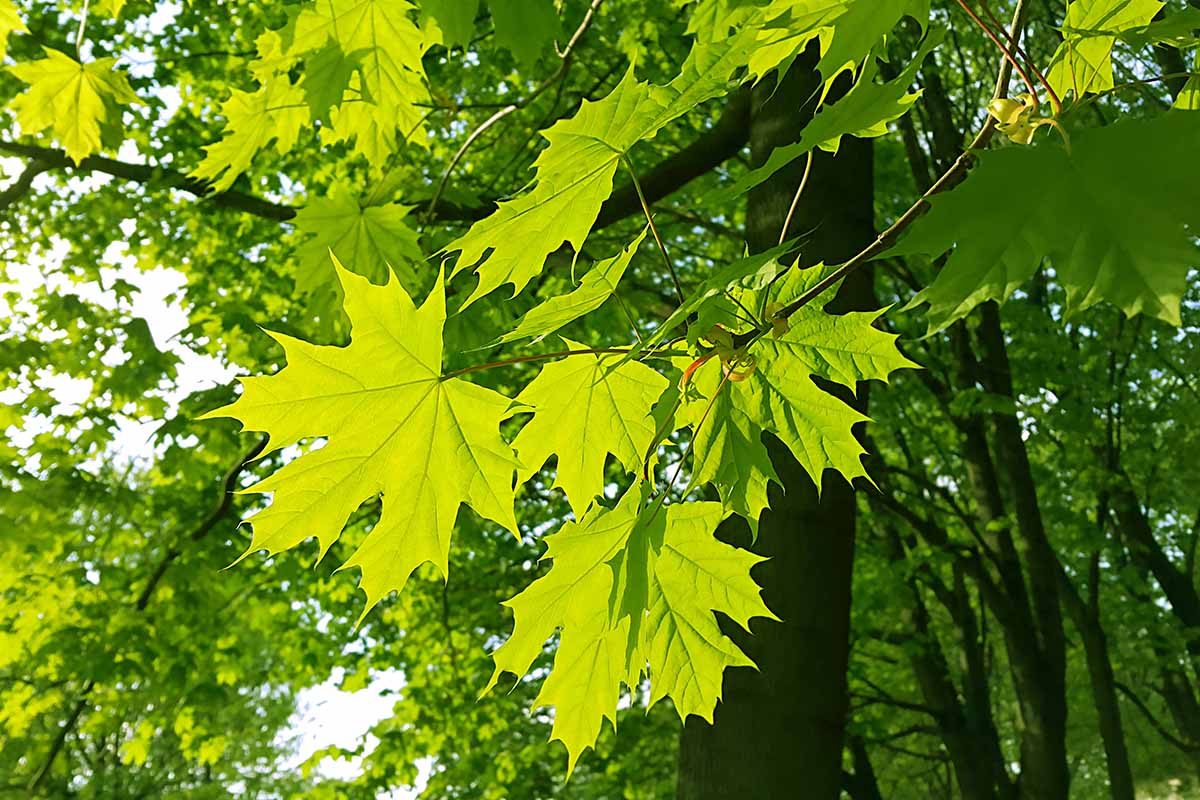
Cutting a maple tree back also thins it out a bit, increasing intra-tree airflow and helping to keep them sanitary and free of unwanted visitors like fungal pathogens.
In addition, thinning allows light to reach leaves that might be blocked from the sun’s rays in a crowded canopy. Plus, it strengthens the branches that you leave alone, which is pretty sweet.
Vigor
As they grow, undesirable branches and twigs take up resources from the maple and the surrounding environment that could have otherwise been put to better use.
When you remove these freeloading plant structures, nutrients and energy won’t go to waste, and will go to other, more desirable shoots and structures instead.
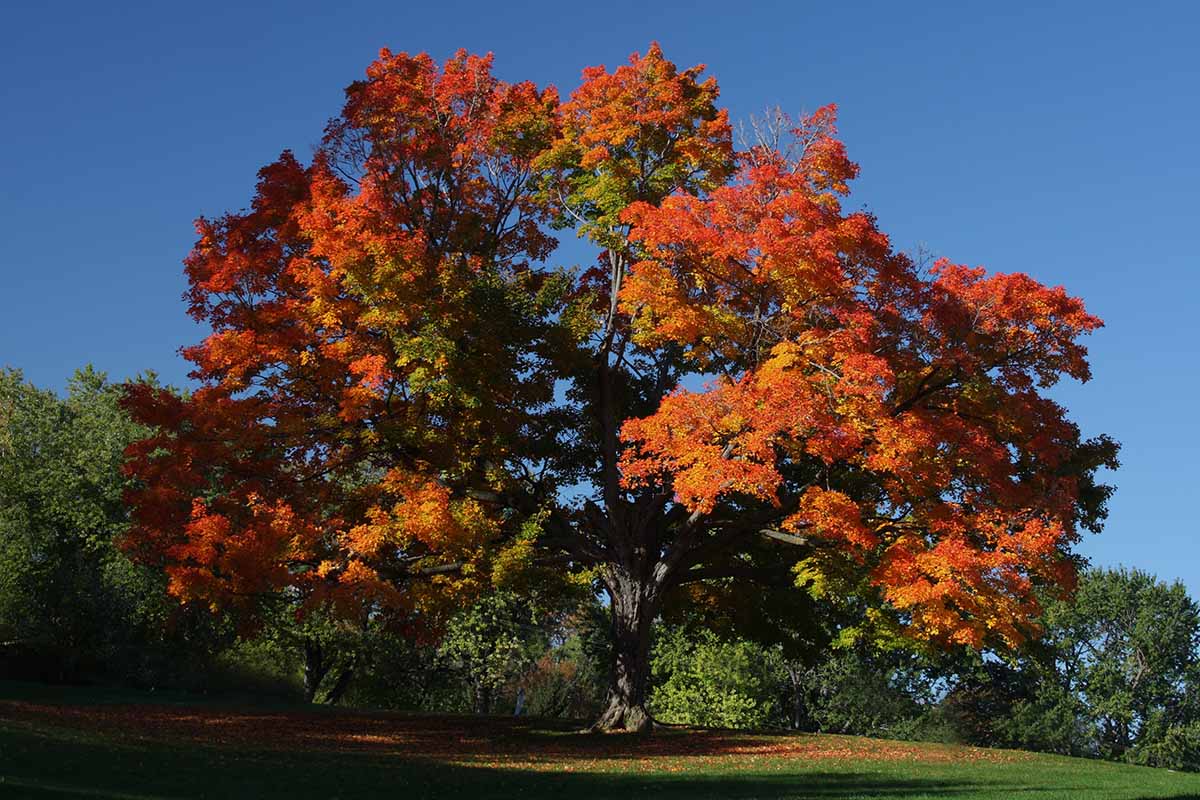
Regular trimming also spurs new growth. The roots and shoots of a plant love to stay in balance, so when you remove shoots by pruning, the resources gathered by the now overpowered roots go towards shoot hyper-development.
What You’ll Need
There are a couple things you’ll need before you begin the project of cutting back these plants. If you’re an avid gardener or amateur arborist, chances are you have a lot of this stuff already. Beginners may need to buy or borrow a few necessary items.

Depending on the size of your specimen, you might need some vertical assistance such as a ladder in order to reach the highest branches. Be sure to work with a buddy for safety if this is the case!
Alternatively, it’s wise to consider hiring a professional arborist if the pruning needs of your Acer are beyond your reach.
Personal Protective Equipment
Safety is paramount, especially when sharp objects are involved.
Here’s a good place to start: safety glasses and work gloves. Safety glasses will keep sawdust, sticks, and sharp, pointy tools out of your eyeballs.
A tough pair of work gloves will protect your hands from cuts and sticky sap.
If you’re looking for premium safety glasses, NoCry has some available on Amazon.
For a pair of heavy-duty puncture-resistant work gloves made with several layers of cut-resistant fabric to protect your hands, visit Garret Wade. These are available in blue or black, in three sizes.
Hand Pruners
These handheld tools are small enough to snip away twigs and small branches – perfect for small edits and finishing touches. Bypass pruners in particular will ensure the cleanest possible cuts, while also maintaining blade sharpness.
To purchase a set of carbon steel bypass pruners with a nonslip PVC grip, visit Gardener’s Supply.
Loppers
With their tough, stout blades and leverage-manipulating handles, loppers are ideal for removing branches too large for hand pruners.
A heavy-duty set of bypass loppers with telescopic handles can be purchased from Garrett Wade.
Pruning Saw
A pruning saw is best used on branches that are too large for loppers, as well as on any competing trunks or leaders that you need to saw away. It combines heavy-duty sawing capability with the compactness necessary for fitting into tight spaces.
A handheld pruning saw with a 12-inch blade and wooden holster sheath can be purchased from Garrett Wade.
Pole Saw
A pole saw is simply a saw blade on a long handle, which really extends your reach.
The handles of the longer models either collapse or disassemble into two or more sections, which makes the pole saw both lighter in weight and more convenient to store than pole saws with fixed-length handles.
Find a pole saw with a 15-inch curved cutoff blade, 25 feet of total reach, and a handle that breaks down into three separate pieces at Garrett Wade.
Isopropyl Alcohol
When cutting various shoots off of different plants, it’s really important to sterilize your tools in between cuts so any pathogens present don’t hitch a ride to new hosts.
A solution of water and isopropyl alcohol will get the job done – just make sure the alcohol is at least 70 percent of the mixture, with water making up the rest.

A fringe benefit of isopropyl alcohol is that it’ll help to de-sap your blades. Anyone who’s tried to open and close a pair of gummed-up pruners or loppers knows how helpful this is!
A bottle of 99 percent isopropyl alcohol is available from Solimo via Amazon.
When to Trim a Maple Tree
Diseased, broken, or decaying branches can be cut back whenever you happen to notice them. But keep the more involved sessions of shaping or thinning healthy green growth to once a year.
For the most part, deciding when to schedule your primary pruning sessions is a layup.
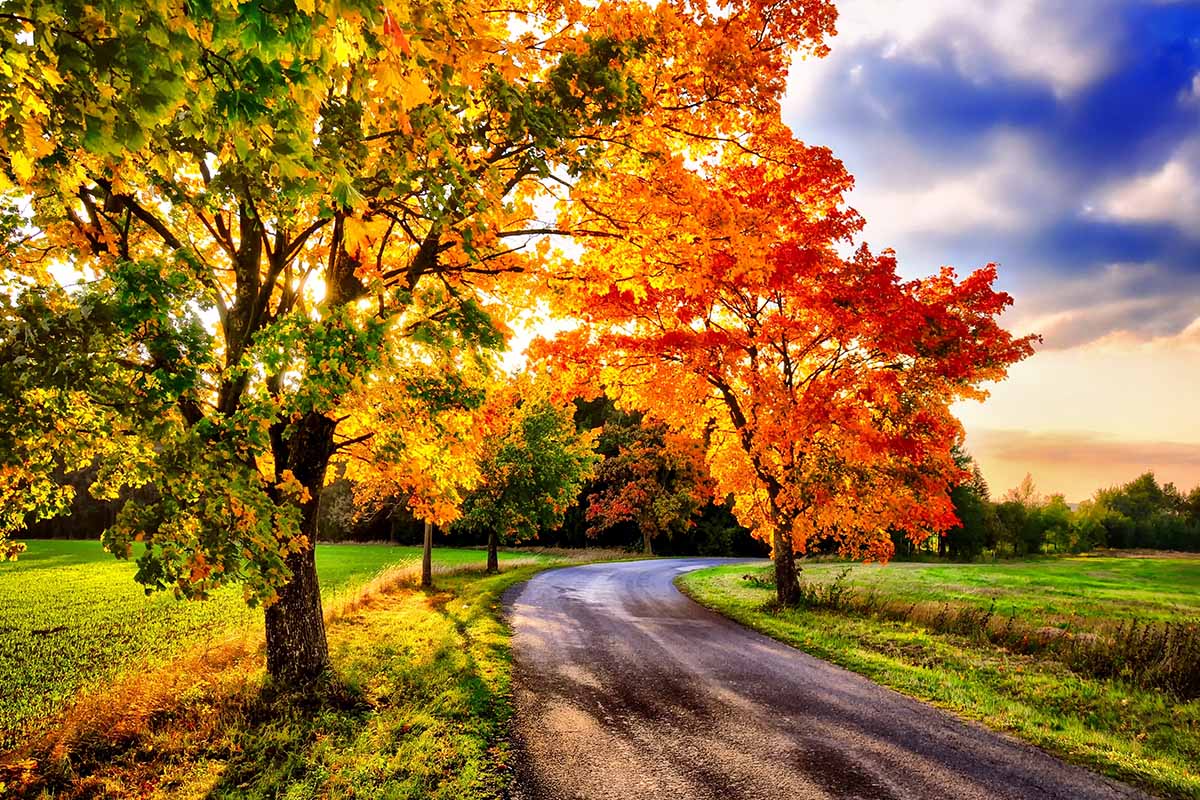
Trimming before that first flush of growth appears in spring will result in the most vigorous growth for most types of trees, so planning to do your work in late winter or early spring is a pretty good prescription… most of the time.
Maples, on the other hand, may require some more careful consideration.
Since they bleed so much sap from wounds, maple trees are a pretty notable exception. Because sap is so nutritious and life-giving to an Acer, cutting at standard pruning times could cause the tree to lose a lot of sap.
This sap loss may or may not be harmful, depending on the size and age of the tree. Sometimes sap loss is no big deal, while it can affect a maple’s health and vitality at other times.
Here’s a good rule of thumb to decide how to proceed: the greater a maple’s size and age, the better it can handle sap loss, and vice versa.
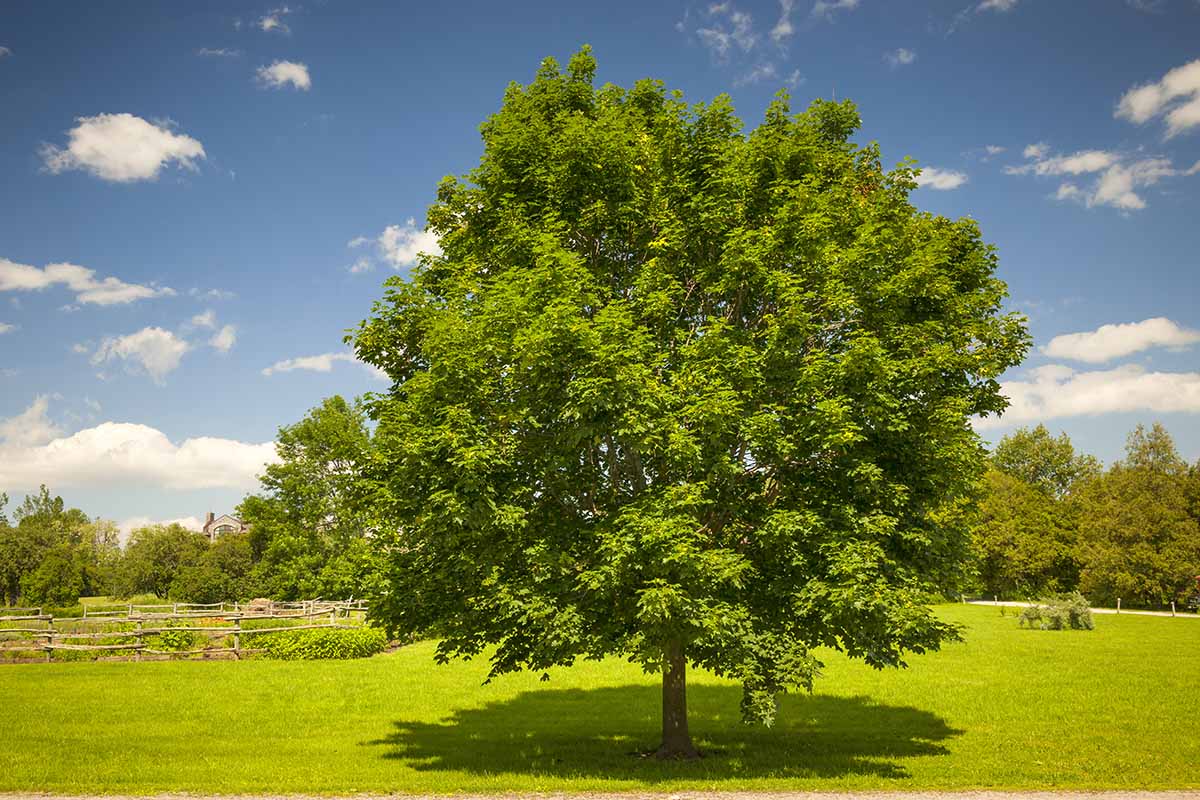
If your specimen is large and old, then you’re probably safe to trim during the traditional timeframe. But if your tree is small, young, or may be prone to excessive sap loss for some other reason, then hold off on pruning until summertime.
At this point in the year, growth has slowed and wounds won’t ooze as much sap, but it’s still early enough to avoid the wet, cold, and disease-promoting conditions of fall and winter.
How to Prune
We’ve laid out the motivations, the tools, and the timing behind this process. Let’s cover the actual pruning part now.
Here’s a helpful checklist to understand what you should prune, in order from greatest to least importance:
- Take off dead, sick, or injured branches right away, as soon as you see them.
- If choosing a central leader is applicable in young, poorly tended, or damaged trees, choose the strongest, most centered, and most vertical leader to keep, and prune away competing branches as needed.
- If two branches are crossing or rubbing together, this will eventually result in bark damage and injury. Choose the one with the branch-to-trunk angle that’s closest to 90 degrees, and cut away the loser.
- Remove low-growing branches so that the trunk below the canopy is emphasized, and encouraged to grow straight and strong.
- If a branch droops, points sharply upwards, or is otherwise nowhere close to a 90 degree angle from the trunk, prune it.
- If any branches are growing faster than the rest of the maple, cut them back to the length of the adjacent branches.
Pruning cuts should be made parallel to the trunk, and the cut stumps should just barely protrude from beyond the branch collar without cutting into it to avoid damage.
Non-parallel cutting angles allow for water to collect on the wound, which could result in disease.
If any branches that you wish to cut back are rather heavy, utilize the three-cut method by first making a cut one to two feet out from the trunk halfway up into the branch.
Next, make a complete cut a couple inches further out from the trunk. Finally, make the last cut slightly beyond the branch collar.
The three-cut method is great because the pruned branch won’t take a strip of bark or “heel” with it when it falls. If you need a vivid analogy, this is like when you aggressively pick at a hangnail and pull away a LOT more skin than you intended to.
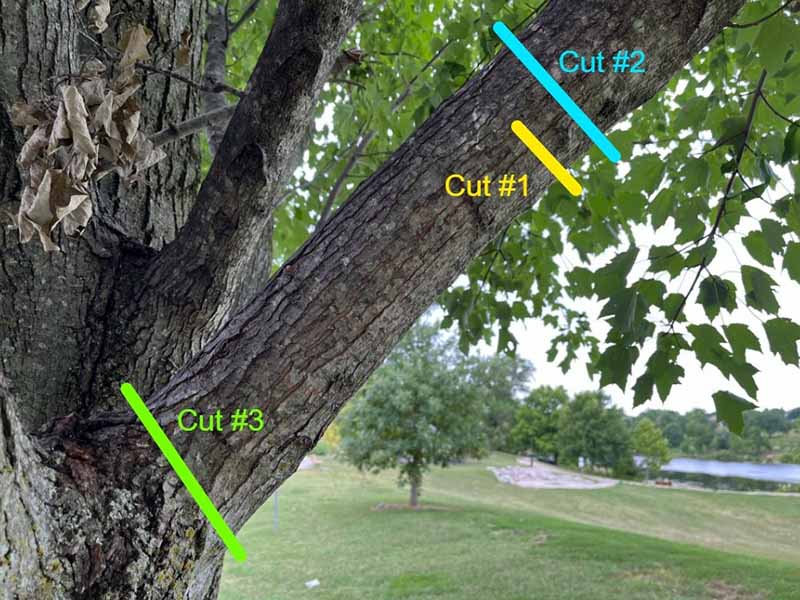
Other than one-off pruning sessions of sick, dead, or damaged branches, all of the branches and twigs removed from the tree in one go should make up no more than a third of the plant’s total aboveground growth.
Any more, and the physical stress may prove excessive.
Prune from the top down, so you can pace yourself and avoid removing the maximum recommended growth prematurely.
This is basically a trick that forces you to regularly take a step back from the tree and look over your work to see if you’re rationing out your “pruning bucks” correctly.
Pruning from the bottom up, on the other hand, makes it all too easy to remove a third of the tree’s growth before you’ve even made it halfway up the trunk.
Aaaaaand Cut!
That’s a wrap on this guide, and it’s also a call to action: go prune your maple trees, people! As long as it’s the proper time, that is.

Pruning an Acer is quite empowering, especially if you’re used to leaving your landscape trees be and letting them do their own thing.
By maintaining a maple in this way, you take an active role in caring for and improving the tree’s appearance and well-being, which is pretty neat.
Questions or comments about any part of this guide can go in the comments section below. Others can really learn and benefit from what you have to say, so don’t be shy!
And for more information about growing maple trees in your landscape, check out these guides next:
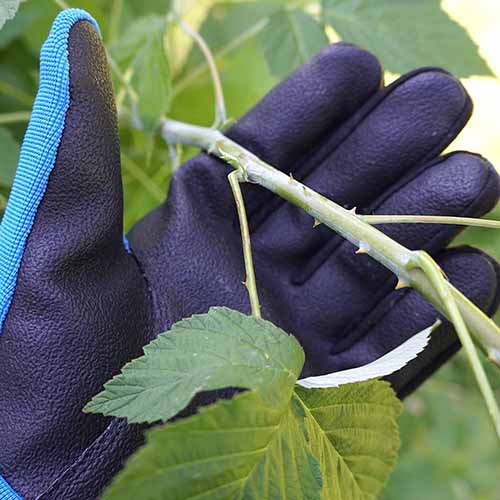

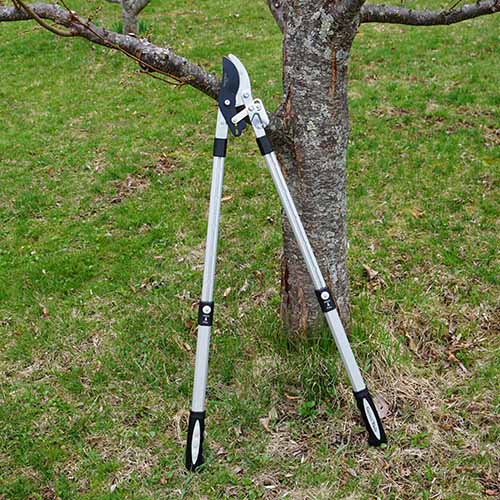
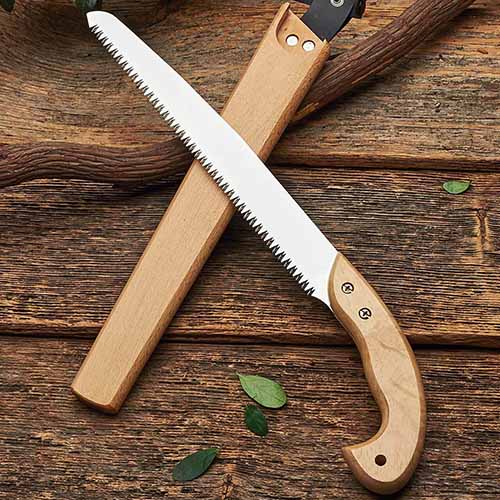
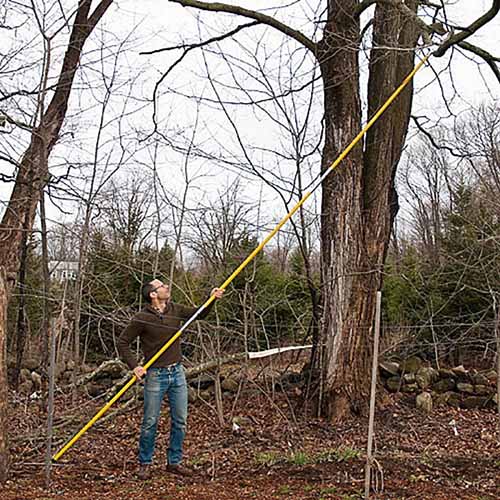
Enjoyed reading your article. I have a Red October tree. It is currently a young tree (under 5 years) but l don’t have a big yard. Is it possible to keep it small or will that hurt the tree?
It’ll definitely be an uphill battle… keeping a tree smaller than it genetically wants to be is a significant stressor for the plant. Which cultivar is it, exactly? ‘October Glory’? ‘Octoberfest’? ‘October Brilliance’? Something else?
I am in N. Florida and have a Red Maple that has a split trunk. It now has 3 trunks with shoots off of that. How should I prune it?
I’d definitely recommend pruning the tree to where it has a single leading trunk. It’s not an absolute requirement for the survival of the tree, but a red maple with a dominant leader tends to look better, last longer, and grow stronger than a specimen with multiple competing leaders.
Hi Joe, very interesting and helpful article. I’m in NSW Australia. I’ve a lipstick maple that’s now seven years old. Growth is very base shape. The wind caught a branch and ripped it off into the main trunk. I’m not sure what to do now. Will it recover and should I prune?
Any advice would be greatly appreciated.
I can’t say for certain without an image, but provided that a tree hasn’t lost more than half of its crown, it can usually lose a single main branch and survive (unless doing so split the actual trunk). So yes, I think your tree should recover eventually. In the meantime, see if you can clean up the wound a bit by pruning the damaged branch all the way to the trunk if it wasn’t completely torn off, and trim away any torn bark with a sharp and sterile blade.
Hi–Here is the result of a maple seedling from my brother’s house. Do you have an idea of what shape it is going to be? I’m really happy with that split at the bottom, it reminds me of a tree we used to climb in when we were kids, but it has that tall leader and the branches aren’t very big. Do I need to prune it?? No experience! (I included 2 attachments, not sure if they went through…)
I don’t see any attachments, is that feature not working?
Hi Lila, I was able to retrieve your pictures.
Hello, Lila! It’s a bit early to tell what the shape will be — and hard to say without knowing the exact species — but it seems like the lesser leader on the right is competing a bit with the stronger leader on the left. I wouldn’t fully prune the leader on the right (it would be too large a prune to make at once… plus, you said you liked the split), but I’d definitely remove at least a third of it to encourage the left leader’s dominance.
I am in southern Idaho. I have a maple given to me by my daughter as a very small tree probably 25 years ago or longer. It was very difficult to get this to grow because it was surrounded by other trees. He grew leaning to the south east. It has a Y about 4 1/2 feet up. The left side of the Y is probably 20% taller in about 50% larger than the rate. I never even thought about trimming maples before. Now I have the other trees trimmed away and this is growing exceptionally well over the last… Read more »
Good question, Layne! It honestly depends on the relative size of what you’re pruning away. As a general rule of thumb, if you’re intending on pruning away more than a third of the tree’s aboveground growth, then that might be too much of a stressor for the tree to handle. I can’t perfectly visualize your tree without an image, but I’d say you’re doing the right thing by trying to maintain a strong central leader. Just don’t prune away more than a third of the branch mass, and you should be good!
ive a 5yo flame maple in NE Az at 6300’ Last 2 seasons the top 2-3ft has failed to produce leaves, leaving the top trunk bare. Should I trim? Is this a sign of distress?
Hey, David! So, the issue could be multi-factored, but I would definitely say that the problem is a sign of distress overall, whether it’s too much sun, root stress/damage, drought, nutritional deficiencies, all/or even some sort of pest. The higher a plant is elevation-wise, the less sunlight it can handle without taking damage, since the a thinner atmosphere increases UV exposure. This could be a factor, since your tree is sitting at 6300 feet. If the roots are damaged, then the shoots will respond accordingly in order to keep the roots and shoots in approximate balance, so that’s something else… Read more »
Hi Joe, I just recently bought a whole lot of bare root field maples because I want to grow a hedge in my veggie garden. They are still quite young. Do I still prune them in early winter in order to allow them to become bushier, or what would you suggest?
Hello there, Laura!
For young maples, I’d recommend pruning them in summertime. For this specific scenario, it’s kinda like the Goldilocks of possible pruning times, because it won’t lose a ton of sap like it would with springtime pruning, but it’s also early enough for the pruned spots to harden up before the harsher fall and winter conditions.
Thank you for the enlightening article.
We have a maple tree that straddles our and our neighbors properties. Our neighbor cut off most of the branches and twigs that had leaves. In that state, can the maple tree survive? Will the branches be able to grow back?
Hey, Joe! Cool name, by the way. If by “most” you mean “the vast majority,” then that’s gonna be rough on the tree, physiologically-speaking. “Topping” a tree can expose it to pests and pathogens, and it forces the tree to tap into stored resources to regrow its branches, because it doesn’t have any leaves for photosynthesizing new energy. It’ll try and regrow branches quickly to restore the balance of roots and shoots, and as a result of this speed, these new branches will be weaker and more likely to break off. It’s definitely possible for your tree to survive and… Read more »
Thank you for the very thorough and descriptive article. I do feel empowered! I think I cut too much, but my 15 year old tree was so thick it was choking itself. Spring will tell!
You’re very welcome, Laura! Feel free to keep us posted on your tree, if you’d like!
Hello Joe,
I am in in central Texas and have a young Bigtooth maple. It is approximately 12 ft and should I prune the lower branches? Also should I only have one main trunk. I can see I need to wait until late summer.
Just ned a little advice.
Do you have a picture available of your tree?